I’ve been spinning on the Turkish style of spindles for a while now, with a small detour trying my GhstWorks Russian on a small fiber sample. However, in the mean time I have ordered some supported spindles, because I can really see the charm and the advantage now. When spinning with a drop spindle, you always have to take the weight of the spindle itself into account. This weight determines how thick or how thin you can spin with it. You see, if a spindle is very light, it will pull on the yarn less than a heavy spindle. So, making laceweight with a very heavy spindle could be a tricky business. You would have to keep the twist building up with the fingers of one hand, park, and let it travel up towards the fingers of your other hand. Parking would be necessary, because otherwise the not-yet-twisted yarn might fall apart because of the weight of the spindle.
Then just take a light spindle, you won’t have that problem, you say? Well… that’s where another problem comes in. Putting twist, energy into the singles that you are spinning costs energy. When making a thin single, there is a need for a lot of twist per inch. The spindle needs to spin fast to get you all that twist in a reasonable amount of time. For a thick single, you need less twist per inch, but the spindle needs more power to put the twist in, because the single weighs more, relatively speaking. If you try spinning thick yarn with a light spindle, you might manage to get some twist, but the spindle can’t hold it, it will backspin very easily because the force of the twisted yarn overpowers its weight…
Okay, so you need a light and a heavy spindle. Imagine you have both. Why would you need a supported spindle, then?
The texture of the singles you spin is influenced by the spindle you use. If you use a suspended spindle (top whorl/bottom whorl – Turkish too), the weight of the spindle is hanging from the yarn you are spinning. It stretches the fibers vertically, and it creates a more worsted yarn – quite slick and smooth, with little air trapped inside. However, with a supported spindle (Russian, Tibetan, Navaho, Tahkli etc.), the weight of the spindle has no influence on the yarn you produce in the same way. The weight of the spindle does have influence on how long it spins, a heavier spindle will be harder to flick, but will also be harder to stop spinning, where a lightweight spindle can be put into motion easily, but will also stop sooner.
This opens up some new possibilities… With a supported spindle, the spindle doesn’t pull on the yarn, the yarn can be as lofty and airy as you wish (of course within limits – it shouldn’t fall apart). You get to choose if you want a fast, short spinner (Russian) or a slower, longer spinner (Tibetan) – and as you put more yarn onto the spindle, it will start to behave more like a Tibetan because of the increased weight and circumference. So, you sort of avoid the whole gravity thing that is so important in suspended spinning!
Supported spinning is often thought to be harder than suspended spinning, because it’s a bit trickier to get into a rhythm. You need to flick the spindle, keep it spinning, keep it from falling, and you have to draft with one hand (okay, you could kind of use both a bit, but you would use one hand mainly). It takes a while to get it into your system, but then… it gives you an extra option, and a lot of freedom!
I now have two Tibetans (both Enid Ashcroft), a Russian from GhstWorks, a Russian from Phil Powell and a Holly Dart (in between) from TwistedGrains. Lately, I’ve been using the Phil Powell Russian a lot. It’s an absolutely gorgeous spindle, made out of ebony, with a moonstone in a bullet shape at the bottom to turn on. I use it with a glass spindle bowl I found at the thrift store for under a euro. I still need a wooden bowl for the Tibetans, which is why I didn’t use them extensively yet (I heard that using them with a glass bowl will make them wear more than if using a wooden bowl).
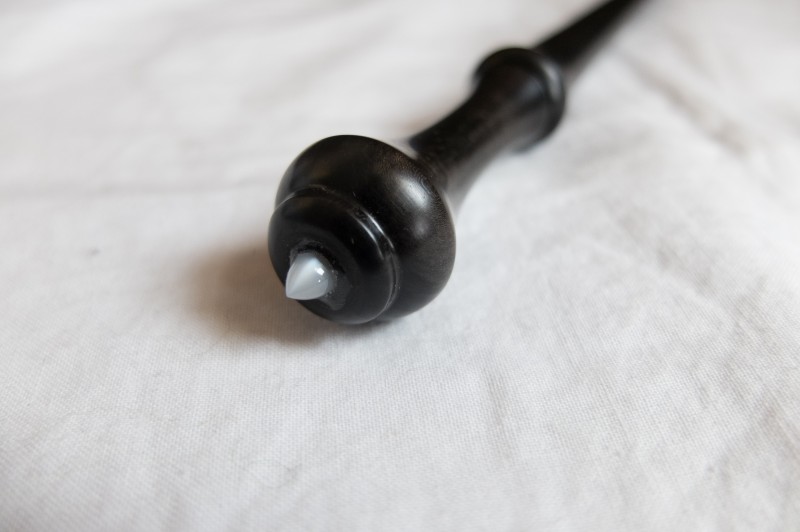
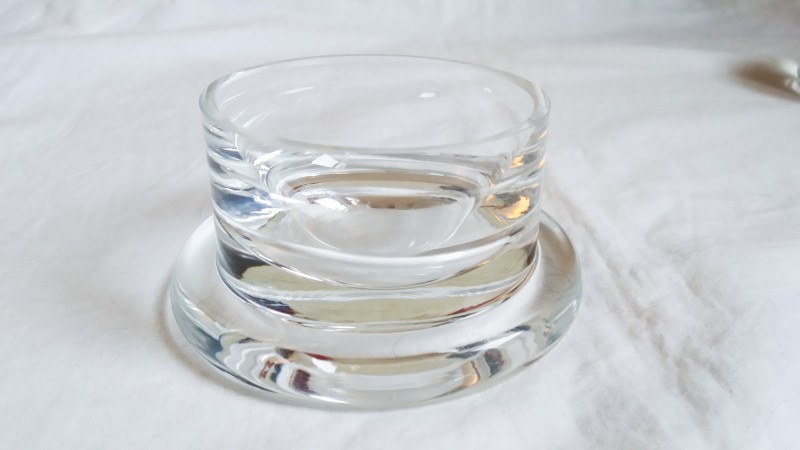
The first bigger project with the Phil Powell spindle was some Corriedale I had lying around – I spun up quite a bit, and even though I didn’t always put enough twist into the single, I managed to find my rhythm, which was the real point. I then n-plied the singles with my Riley Medium, producing a bit over 100 meters of yarn (29 grams).
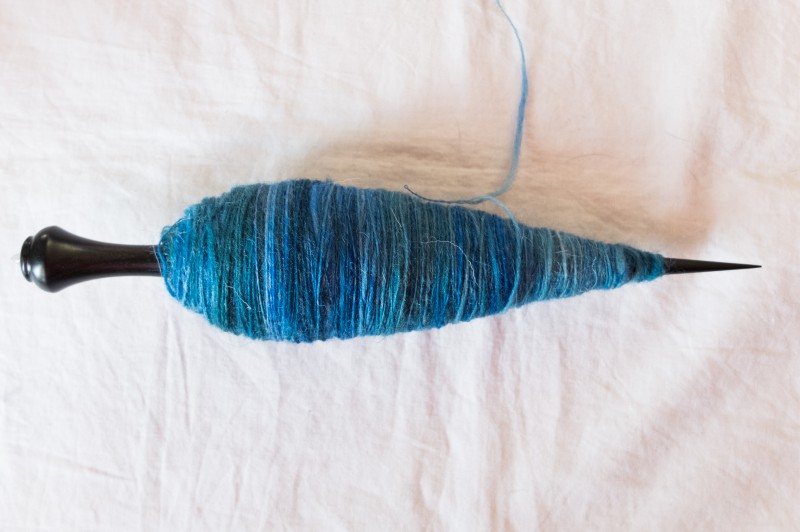
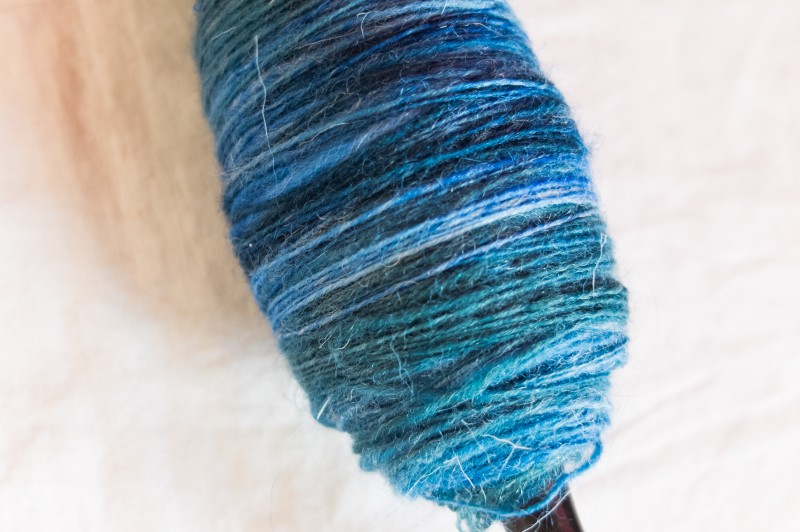
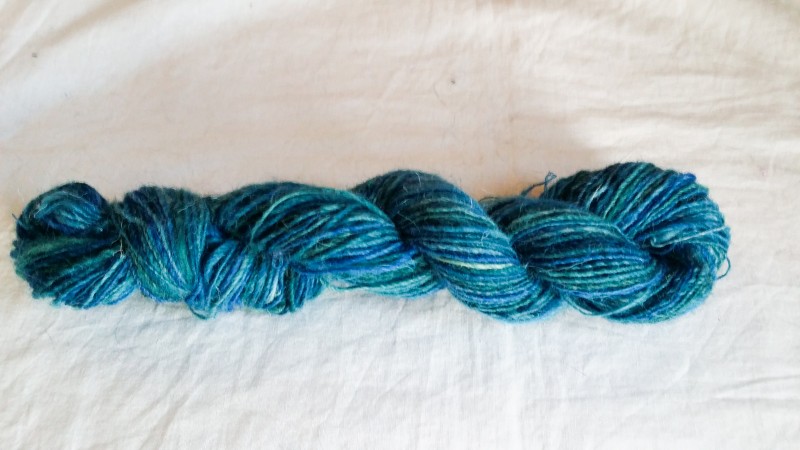
After that practice round, I moved on to some of the prettier stuff: a beautiful batt made by my friend Tineke, in lavender, white and other soft colours, with some sparkle in it. A joy to spin!
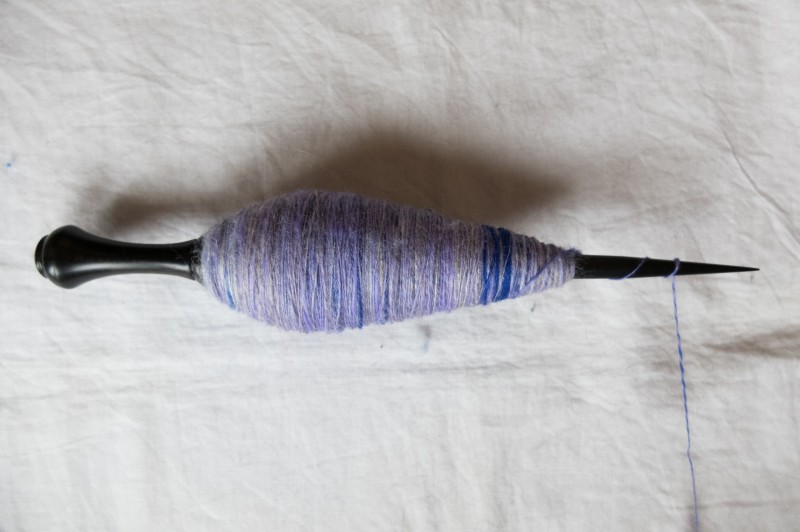
Much smoother already, and quite thin too. I must say that I’m really enjoying supported spinning, but at this point I cannot choose what I like more: suspended or supported. Fortunately, I don’t have to choose!